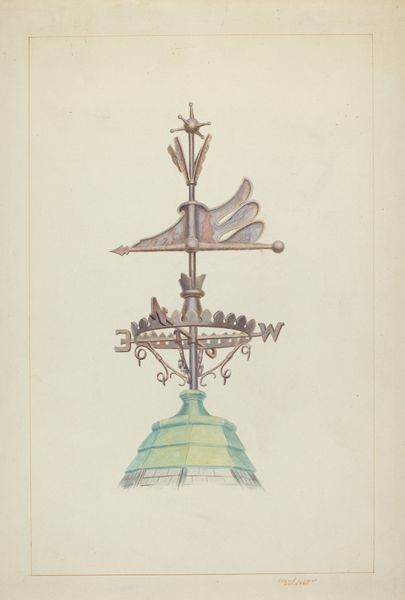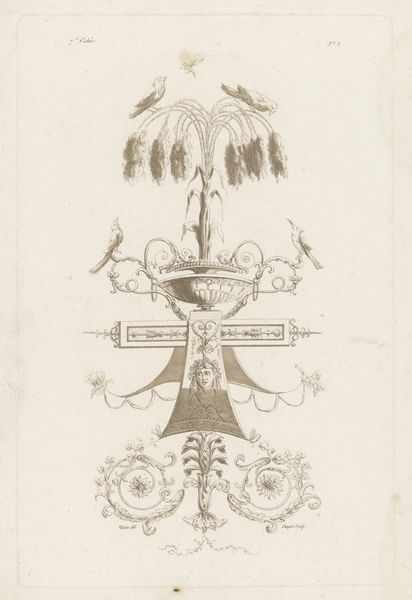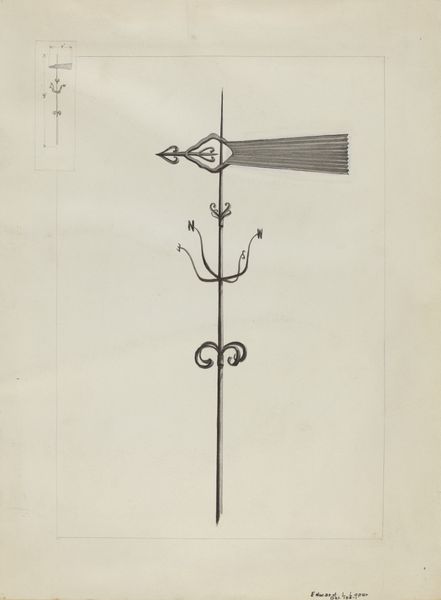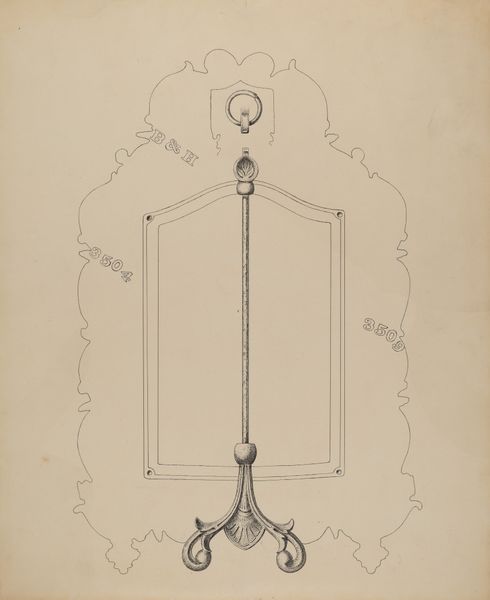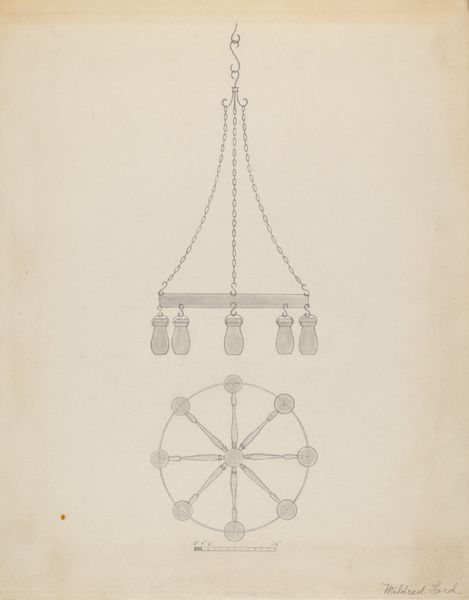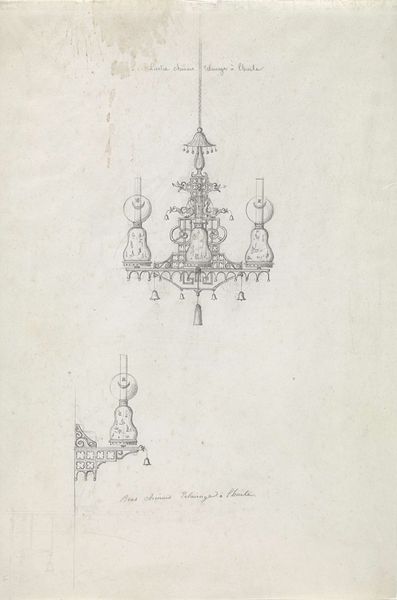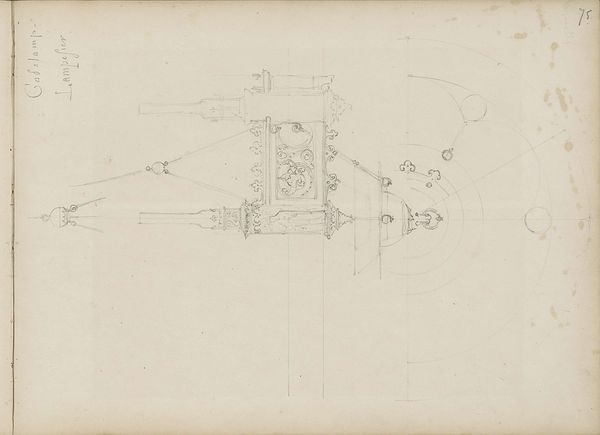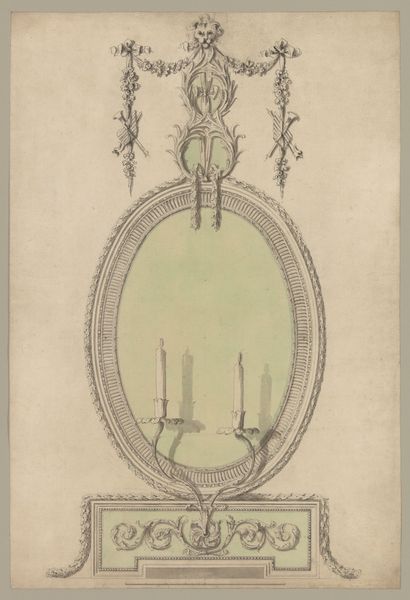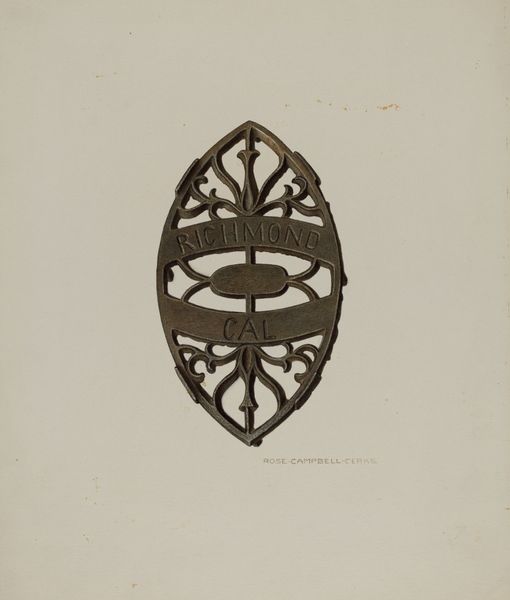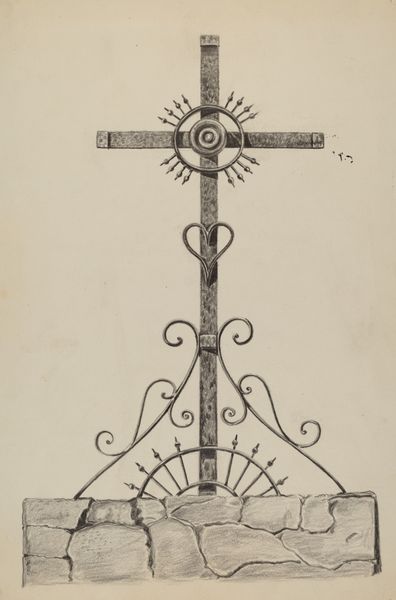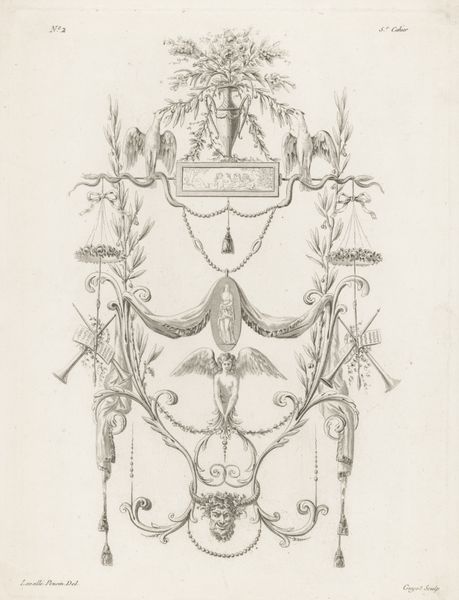
drawing, pencil
#
drawing
#
figuration
#
pencil
#
line
#
realism
Dimensions: overall: 34 x 35 cm (13 3/8 x 13 3/4 in.)
Copyright: National Gallery of Art: CC0 1.0
Editor: This drawing, simply titled "Cross," was created by Ray Price around 1937 using pencil. It feels both delicate and monumental at the same time. How do you interpret this work? Curator: Well, immediately I consider its potential relationship to liberation theology, particularly given its creation in the late 1930s, a period rife with social upheaval and the rise of oppressive regimes. How might we read the symbol of the cross, not as an emblem of passive suffering, but as a defiant declaration of faith in the face of injustice? Editor: I hadn’t considered that at all! I was just thinking of it in a purely art historical sense, as a religious symbol rendered in a minimalist way. Curator: Think about it, though – the artist chose to depict a cross during a tumultuous era. The linear style, almost architectural, could symbolize the rigid structures of power challenged by faith and social movements. What does the starkness of the pencil on paper suggest to you in this context? Editor: It makes me think of vulnerability, like a fragile hope. It is interesting to imagine the artist as making a statement, a reaction to socio-political circumstances of the time. It almost seems radical now! Curator: Exactly. The image becomes less about simple religious devotion and more about resistance, resilience, and the intersection of faith with the fight for justice. Understanding it through this lens helps reveal its depth and relevance, don't you think? Editor: Absolutely. I’ll definitely view this piece differently now. I thought it was just an okay line drawing of a religious subject but there's an intense amount of hidden meanings. Curator: It reminds us to critically examine the narratives embedded within art, especially concerning faith, power, and resistance. The beauty of art history lies in uncovering those layers, shifting perspectives, and engaging with diverse interpretations.
Comments
No comments
Be the first to comment and join the conversation on the ultimate creative platform.
